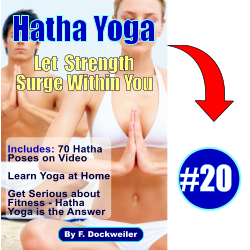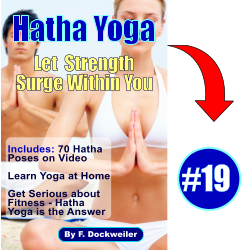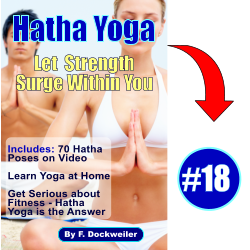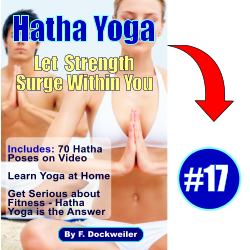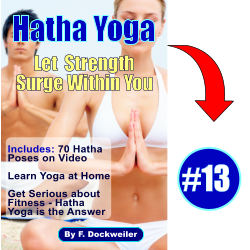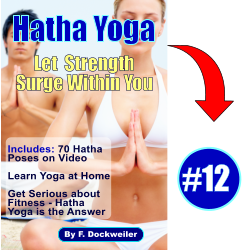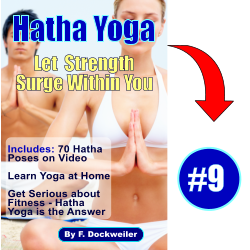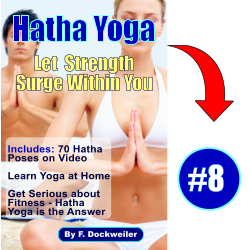Do you love your legs? You should! No matter what they may look like, thin or muscled, long or short, you need to love your legs because together with your feet and thighs, they are the ones that support your lower body and bring you to all of those places that you want to go.
In Hatha Yoga, the Triangle Pose is one of the best fitness exercises for the legs.
Qualities of the Triangle Pose
If you are like most average people (read: not yet exceptionally fit), you know the “burnt out candle” feeling that you can get at the end of an exhausting working day. Your job doesn’t even have to be physically taxing to get that feeling.
Far too often, it is stress and anxiety on the job that can cause you to feel enervated. Students and homemakers are also susceptible to such feelings.
In Hatha Yoga, we have the Triangle Pose, or Trikonasana in Sanskrit (trikona = three angled, asana = pose) as the perfect solution against the formation of such feelings.
The Triangle Pose is a powerful fitness exercise that can expand your torso and assemble evenness, balanced control of the legs and feet, with the arms acting as the ideal complement or foil.
The Mountain Pose, also know as the Triangle Pose, is a gentle basic and much liked pose that is useful for introducing your body to stretching and to breathing rhythmically. Think of a mountain as being sturdy and solid, not suddenly collapsing even when buffeted by strong winds or roaring flash floods. Imagine yourself as a mountain rising up and reaching for the glorious sky.
Benefits of the Triangle Pose
- Mental – the Triangle Pose is restorative when the mind is overburdened by anxiety.
- Physical –the focus of the Triangle Pose is on the shoulders, spine, chest, thighs, legs, abdomen, knees, and ankles. It can assist towards improved digestion, and the lessening of back pains, and aches associated with flat feet. Menopausal women have reported that this pose helps to relieve many of their symptoms.
- Spiritual – the Triangle Pose is beneficial when you want to feel centered and in control of your reactions to life’s daily stresses.
Safety Alert
The Triangle Pose is not recommended for those with low blood pressure, bouts of diarrhea, and headache. It is possible for those who have neck problems, heart conditions, and hypertension to practice this pose under certain conditions, but prior clearance from a medical doctor would still be best.
Demonstration of the Triangle Pose
Half Moon Pose – Banishing Life’s Dark Elements with Light
As mentioned in the introduction article to this guide, Hatha Yoga strives for the union of two separate entities, the body and the mind, as symbolized by the sun and the moon. While the concept may seem extremely esoteric or obscure to Western minds, it is actually a very practical representation of what goes on as a matter of course in daily life.
In Hatha Yoga, we have the Half Moon Pose, or Ardha Chandrasana in Sanskrit (ardha = half, candra or Chandra = glittering, moon, and asana = pose) as a health and wellness strategy to help us cope better with the dark elements of life (fatigue, frustration, stress, anxiety, fear) by putting additional brilliance in our existence.
Qualities of the Half Moon Pose
How many stress hormones do you have floating around in your body, affecting not just the physical side of you, but just as importantly, affecting your mind and emotions? These stress hormones can inflict havoc in the way our body functions, leading to conditions as varied as sciatica, indigestion, anxiety, and constipation among others.
The Half Moon Pose combines both balancing efforts with timed breathing to draw out stress hormones such as cortisol and norepinephrine from the body, thereby addressing the medical conditions cited above.
Benefits of the Half Moon Pose
- Mental – the Half Moon Pose is ideal for relaxing the mind, as it focuses on keeping an alignment of the body. In the process of doing so, external cares and worries are pushed away from the mind.
- Physical –the focus of the Half Moon Pose encompasses the shoulders down to the ankles. The pose is great for alleviating symptoms of osteoporosis, fatigue, gastritis and mental pain.
- Spiritual – the Half Moon Pose is beneficial for those who deal with stress on a daily basis and need gentle relief in order to stay physically, mentally, and emotionally fit.
Safety Alert
The Half Moon Pose is not recommended for those with migraines, insomnia, low blood pressure, and loose bowel movements.
At the top of this article we’ve discussed seeing your legs in a new light by means of the “Triangle Pose” and provided a demonstration video to help you get started. Next we talked a little bit about the benefits of the “Half Moon Pose” and how it can help your mental, physical and spiritual being.
Remember that you can get all of the demonstration videos that goes with this guide by subscribing to the MyFitnessNut.com Newsletter. Next, we’ll delve into challenging the limits set by your mind with the “Yoga Plank Pose” and talk about the associated benefits.

